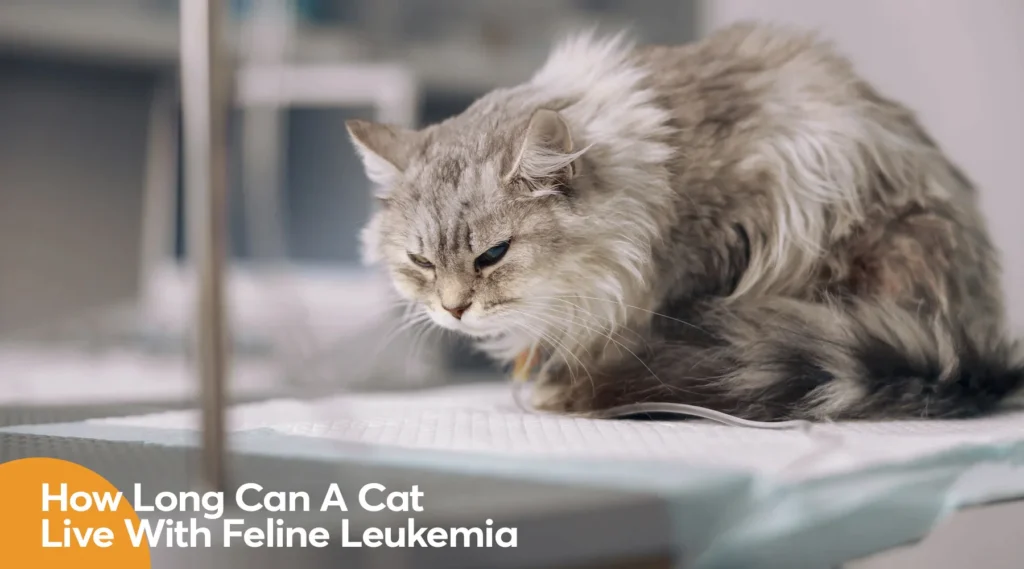How Long Do Feral Cats Live Indoors?

Feral cats are cats that have not been socialized to humans and live in the wild or in colonies with other feral cats. They face many challenges and dangers in their outdoor environment, such as predators, diseases, weather, and human hostility. Therefore, their average lifespan is much shorter than that of domestic cats, which can live up to 20 years or more indoors. However, some feral cats may be rescued or adopted by kind-hearted people who provide them with food, shelter, and veterinary care. Today, we will discuss how long do feral cats live indoors and what factors affect their longevity. These factors are their age and health condition when they are brought inside, their level of socialization and stress, and their spay/neuter status and vaccination history.
Age and Health Condition
The first factor that affects the lifespan of feral cats indoors is their age and health condition when they are brought inside. Feral cats that are young and healthy have a better chance of adapting to indoor life and living longer than older or sickly ones. According to the National Feline Research Council, the average lifespan of a feral cat is less than two years, but this can vary depending on the cat’s environment and access to food and shelter. If a feral cat is part of a colony that has a caretaker, he or she may have a longer lifespan of up to 10 years. However, if a feral cat is rescued from a harsh or dangerous situation, he or she may have suffered from injuries, infections, parasites, or malnutrition that can shorten their life expectancy. Therefore, it is important to take a feral cat to a veterinarian as soon as possible after bringing them indoors for a thorough check-up and treatment.
Common Health Problems in Feral Cats

Feral cats may have various health problems that can affect their quality and length of life indoors. Some of the common health problems are:
- Rabies:
Rabies is a viral disease that affects the nervous system and can be transmitted by bites from infected animals. It is fatal if not treated promptly. Feral cats are at risk of contracting rabies from other wildlife or unvaccinated cats. Therefore, it is essential to vaccinate a feral cat against rabies as soon as possible after bringing them indoors.
- Feline leukemia virus (FeLV):
FeLV is a retrovirus that causes immunosuppression and cancer in cats. It can be spread by saliva, blood, urine, or feces from infected cats. Feral cats are at risk of contracting FeLV from other cats in their colony or from fighting with other cats. Therefore, it is important to test a feral cat for FeLV as soon as possible after bringing them indoors and isolate them from other cats if they are positive.
- Feline immunodeficiency virus (FIV):
FIV is another retrovirus that causes immunosuppression in cats. It can be transmitted by bites from infected cats. Feral cats are at risk of contracting FIV from fighting with other cats or from mating with infected cats. Therefore, it is important to test a feral cat for FIV as soon as possible after bringing them indoors and isolate them from other cats if they are positive.
- Feline infectious peritonitis (FIP):
FIP is a fatal disease caused by a mutation of a common coronavirus in cats. It can cause inflammation of the abdomen, chest, or brain in cats. Feral cats are at risk of contracting FIP from exposure to the coronavirus in their environment or from other cats. Therefore, it is important to monitor a feral cat for signs of FIP, such as weight loss, fever, lethargy, or difficulty breathing, after bringing them indoors and seek veterinary care if they show any symptoms.
Benefits of Spaying or Neutering
Spaying or neutering a feral cat is another way to improve their health and lifespan indoors. Spaying or neutering a feral cat can prevent reproductive issues such as uterine infections, mammary tumors, testicular cancer, or prostate problems that can reduce their lifespan. It can also reduce behavioral problems such as roaming, fighting, spraying, or mating, which can increase their risk of injury or disease. Therefore, it is essential to spay or neuter a feral cat as soon as possible after bringing them indoors to prevent these problems and improve their quality of life.
Socialization and Stress
The second factor that affects the lifespan of feral cats indoors is their level of socialization and stress. Feral cats are not used to human contact and may be fearful or aggressive towards people or other pets. They may also have difficulty adjusting to the indoor environment and may exhibit behaviors such as hiding, scratching, spraying, or escaping. These behaviors can indicate stress, anxiety, or boredom, which can negatively affect their physical and mental health.
Therefore, it is important to provide feral cats with a safe and comfortable space where they can feel secure and relaxed. It is also important to respect their boundaries and preferences and not force them to interact with humans or other animals if they are not ready. Gradually, some feral cats may become more trusting and friendly towards their caregivers and enjoy indoor life, while others may remain aloof or independent.
How to Socialize a Feral Cat
Socializing a feral cat is a process that requires patience, time, and consistency. It may take weeks, months, or even years for a feral cat to become comfortable with humans or other pets. Here are some steps that can help socialize a feral cat:
- Start by confining the feral cat in a small room with a litter box, food, water, toys, scratching posts, and hiding places. This will help the feral cat feel safe and secure in their new environment.
- Visit the feral cats regularly and speak to them softly and calmly. Do not make eye contact or try to touch them at first, as this may scare them.
- Gradually increase the duration and frequency of your visits and try to establish a routine. Use positive reinforcement such as praise, treats, toys, or playtime to reward the feral cat for showing interest or curiosity towards you.
- Once the feral cat is comfortable with your presence and allows you to touch them, you can try to pet them gently and slowly.
- When the feral cat is relaxed and confident with you in the small room, you can introduce them to other rooms in the house one at a time.




Your point of view caught my eye and was very interesting. Thanks. I have a question for you.
Please let us knwo your question. I’m happy to answer you (: